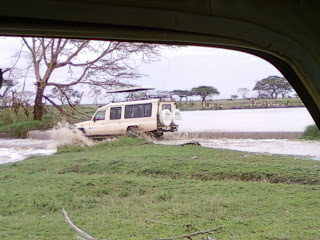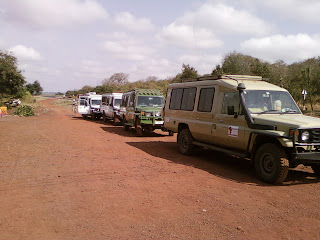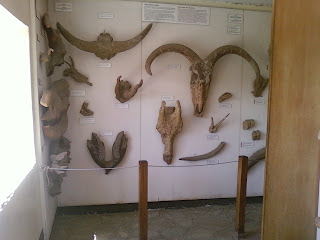| Kondoa Rock-Art Sites * |
|
|
 |
|
|
|
|
|
|
|
|
|
|
|
|
|
Location of Kondoa Rock Art Sites in Tanzania
|
|
The
Kondoa rock art sites are a series of caves carved into the side of a hill looking out over the
steppe, c. nine kilometres off the main highway from
Kondoa to
Arusha, about 20 km north of Kondoa, in
Tanzania.
The caves contain paintings, some of which are believed by the Tanzania
Antiquities Department to date back more than 1500 years. The paintings
depict elongated people, animals, and hunting scenes. Tourists are
asked to report to the Antiquities Department office on the highway at
the village of Kolo and ask for the cave paintings guide.
Olduvai Gorge, the archaeological site also known as "The Cradle of Mankind”, is a steep-sided ravine in the
Great Rift Valley that stretches through
eastern Africa. It is in the eastern
Serengeti Plains in northern
Tanzania and is about 48 km (30 mi) long. It is located 45 km from the
Laetoli archaeological site. The name is a misspelling of
Oldupai Gorge, which was adopted as the official name in 2005. Oldupai is the Maasai word for the wild sisal plant
Sansevieria ehrenbergii, which grows in the gorge.
[1]
Olduvai Gorge is one of the most important
prehistoric sites in the world and has been instrumental in furthering the understanding of early human
evolution. This site was occupied by
homo habilis approximately 1.9 million years ago, paranthropus boisei 1.8 million years ago, and
homo erectus 1.2 million years ago.
Homo sapiens are dated to have occupied the site 17,000 years ago.
This site is also significant in showing increased developmental and social complexities in
hominins. Evidence of this is shown in the production and use of
stone tools, which indicates the increase in
cognitive capacities. There is also evidence indicating the practices of both scavenging and
hunting,
which is highlighted by the evidence of gnaw marks predating cut marks,
and comparisons on percentages of meat versus plant in the early
hominid diet. Furthermore, the collection of tools and animal remains in
a central area is evidence of increases in
social interaction and communal activity.



























































